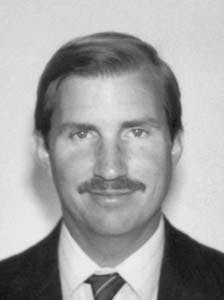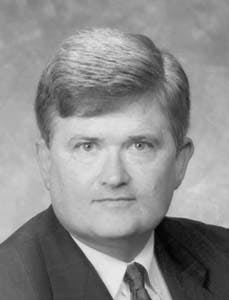Rick R. HaunMajor LPG projects planned or under way in Africa will increase the importance of that region's presence in world LPG trade.
Purvin & Gertz Inc.
DallasKen W. Otto, S. Craig Whitley
Purvin & Gertz Inc.
Houston
Supplies will nearly double between 1995 and 2005, at which time they will remain steady for at least 10 years.
At the same time that exports are leveling, however, increasing domestic demand for LPG is likely to reduce export-market participation by Algeria, Nigeria, Egypt, and Libya.
The growth of Africa's participation in world LPG supply is reflected in comparisons for the next 15-20 years.
Total world supply of LPG in 1995 was about 165 million metric tons (tonnes), of which Africa's share was 7.8 million tonnes (4.7%; Fig. 1 [38255 bytes]).
By 2000, world supply will grow to slightly more than 200 million tonnes, with Africa's share expect to increase to 13.2 million tonnes (6.6%). And by 2005, world LPG supply will reach nearly 230 million tonnes; Africa's overall supply volumes by that year will be nearly 16.2 million tonnes (7%).
World LPG supply for export in 1995 was on the order of 44 million tonnes with Africa supplying about 4 million tonnes (9%). By 2005, world export volumes of LPG will reach nearly 70 million tonnes; Africa's share will have grown to nearly 10 million tonnes (14.3%).
Supply growth
Among African countries, Algeria, Egypt, Libya, and Nigeria are major hydrocarbon producers. But for LPG production alone, Morocco, Tunisia, and Angola account for nearly three-fourths; Morocco and Tunisia consume three fourths of the LPG the region produces.
In 1995, the most recent year for which firm data are available, combined African production of LPG was slightly more than 7.8 million tonnes; 1996 production is estimated to have been nearly 8.5 million tonnes. By 2000, LPG production will increase to about 13.6 million tonnes.
This substantial increase will result from continued expansion of natural gas and LPG production facilities in Algeria and scheduled start-up of gas-processing projects in Nigeria. Surplus LPG supplies from these developments will likely move to Europe and the U.S.
From 2005 to 2015, LPG supplies from the continent will fall from nearly 16.2 million tonnes/year to 15.9 million tonnes/year.
Increased production from both refinery and natural-gas production contributed to higher supply levels in the early 1990s. Production from both sources will continue to increase through 2005, after which supplies will stabilize.
Natural-gas processing in 1995 accounted for slightly more than 6.1 million tonnes, or about 78% of total LPG production in Africa.
Gas processing will continue as the primary source of LPG, supported by planned major projects in Algeria and Nigeria. LPG from gas processing will increase to more than 11.5 million tonnes in 2000, peak at 14.1 million tonnes in 2005 and fall back to 13.7 million tonnes by 2015.
Refinery production of LPG will increase through 2015 as a result of higher capacity utilization and conversion levels. Refinery LPG volumes will expand to about 2.0 million tonnes in 2000, 2.1 million tonnes in 2010, and 2.2 million tonnes in 2015.
Demand balance shifts
Virtually all LPG consumption in Africa consists of residential and commercial use. What engine-fuel demand might exist, primarily in Algeria, is very small and not growing.
And petrochemical demand, nonexistent at present, may become a factor if a long-planned methyl tertiary butyl ether (MTBE) project in Algeria comes on stream, as planned, by 2005.
Total LPG demand will likely increase through 2010 at about 3%/year to about 5.5 million tonnes in 2000, 6.5 million in 2005, and 8.2 million in 2015.
High demand-growth rates in Morocco and Nigeria in the early 1990s have pushed residential-commercial demand at about 5%/year. Such strong growth will continue, supported by governments' efforts to improve standards of living and reduce deforestation and pollution.
Residential-commercial demand for LPG will likely reach 5.5 million tonnes in 2000, 6.2 million in 2005, and 7.7 million in 2015.
If Algeria proceeds with plans for a 600,000-tonne/year MTBE plant to support domestic refinery and export markets, the unit at full capacity, by 2005, could require about 460,000 tonnes/year of butane.
And studies have also been conducted for propane-based olefin plants in Algeria.
Major increases in LPG supplies from Algeria and Nigeria, therefore, will more than balance the expected rise in regional LPG demand well into the next decade.
Net LPG exports will, as a result, increase dramatically in the near and medium terms.
Total exports from Africa will likely reach about 5.2 million tonnes this year, about 7.8 million in 2000 (Fig. 2 [34404 bytes]), before peaking at 9 million in 2005. Maturing fields and continued domestic demand growth will push LPG exports back down after 2005 to about 8.1 million tonnes in 2010 and 7.7 million in 2015 (Table 1 [44138 bytes]).
Algeria
Already the largest LPG producer in Africa and the third largest LPG exporter in the world, behind Saudi Arabia and Abu Dhabi, Algeria has embarked on an aggressive plan to increase LPG production and exports.
In 1990, the country produced 5.1 million tonnes of LPG. By 1997, if current projects and plans come on stream, production will reach nearly 6.4 million tonnes, on their way to nearly 8.3 million tonnes in 2000 and peaking at 10.4 million in 2005.
Production will decline thereafter to about 10 million tonnes in 2015 as some of the country's producing fields reach maturity.
The split between domestic and export demand is reflected in 1994 consumption of the 5 million tonnes produced: Domestic consumption took about 1.5 million tonnes; the remaining volumes went to export markets.
LNG plants, gas-processing plants, and refineries feed Algeria's LPG production.
Of Algeria's four LNG plants at two locations, three produce LPG.
By far the largest plant in terms of LPG production capacity is GL2-Z at Arzew, which began producing LPG in 1984. Its production capacity is 750,000 tonnes/year in a 55/45 C3 to C4 split.
Also, under construction at Arzew are two LPG separation trains at the GP1-Z complex. Capacity will be expanded to 2.4 million tonnes/year. Added to output from existing GP1-Z and GP2-Z plants, Algeria's total LPG production capacity will increase to 8.4 million tonnes/year from 4.4 million tonnes/year (OGJ, Jan. 6, 1997, p. 28).
The other large liquefaction plant is at Skikda with capacity to produce 535,000 tonnes/year of a 60/40 split of C3 and C4.
All LNG plants' LPG output had declined in the late 1980s to nearly 60% of capacity. A refurbishment is under way to restore production capacity to design levels.
As part of plans to develop natural gas fields southeast of Hassi R'Mel, Algeria is building new LPG plants at Hamra, Qued Noumer, Hassi Messaoud, and Alrar.
And a 6-million tonne/year pipeline is also under construction from Alrar to Hassi R'Mel.
The plants are due on stream this year with total production likely to be about 2.2 million tonnes/year.
Other possible projects in the offing could add 3 million tonnes/year of LPG by early next decade.
Plans are also being made to debottleneck and expand capacity for gas separation and refrigeration at Bethioua and Arzew. This would add 3 million tonnes/year of production capacity.
Total production capacity from gas processing as a result of these expansions could reach 7.2 million tonnes in 2000 and peak at 8.9 million tonnes in 2005, declining to 8.4 million in 2015.
At present in Hassi R'Mel, Hassi Messaoud, and Alrar, eight treatment plants are operating.
Five at Hassi R'Mel separate LPG and condensate from natural gas; at Hassi Messaoud, two plants treat associated and nonassociated gas. Total LPG capacity from Hassi R'Mel and Hassi Messaoud is nearly 4.8 million tonnes/year.
Another plant in Alrar cannot recover LPG.
An LPG pipeline moves production from the plants to Arzew and Bethioua for separation and refrigeration.
The Arzew plant can produce about 800,000 tonnes/year of LPG. The large fractionation and refrigeration plant in Bethioua can produce 4 million tonnes/year.
Total LPG-production capacity in Algeria from gas processing, therefore, is about 4.8 million tonnes/year in addition to about 1.2 million tonnes/year from the LNG plants.
Refineries at Arzew, El-Djazair, Hassi Messaoud, and Skikda produce LPG that is marketed domestically.
The refineries are designed to produce up to 800,000 tonnes/year in an 85/15 C3/C4 ratio. Actual production has been lagging this on the order of 450,000 tonnes in 1994.
Production will likely increase to about 550,000 tonnes in 2010.
Total LPG exports from Algeria will increase, primarily as a result of the gas-processing expansions described earlier. By 2000, exports could reach 7.1 million tonnes; by 2005, 8.5 million tonnes.
Egypt
Production of natural gas and LPG in Egypt earlier this decade reached levels that more than satisfied domestic demand, putting the country in a position to begin exporting.
In 1994, LPG exports reached 100,000 tonnes; by 2000, exports could reach 200,000 tonnes.
Approximately two thirds of the country's LPG derives from gas processing; the rest from refineries. When by 2000 natural gas begins to be distributed in the major urban areas of Cairo and Alexandria, more LPG will become available for export-but only for a short period.
Growth of domestic consumption of LPG is likely to increase after 2000 and reduce exports to nearly 60,000 tonnes by 2010. By 2015, Egypt will become a net importer of LPG.
Total production of LPG in the country in 1995 was slightly more than 1.1 million tonnes; output will increase at a pace of 4%/year through 2000, then decline to 1%/year afterward.
Production of LPG is from 12 gas plants with combined inlet-gas capacities of more than 1.6 bcfd. The most recently completed plant, a 300-MMcfd plant at Ameriya, has added 124,000 tonnes/year.
The plant at Abu Qir field has increased its capacity to 300 MMcfd and added 75,000 tonnes/year of LPG capacity to its original 50,000 tonnes/year rating.
By 2000, total production from Egyptian gas plants will equal about 840,000 tonnes; by 2010, 930,000 tonnes.
Since 1990, the country's refinery-produced LPG has grown at 4.3%/year.
LPG production from refineries will probably reach 550,000 tonnes in 2000; 570,000 tonnes in 2005; and 580,000 tonnes by 2010.
These forecasts are based on completion of somewhat problematic refinery-capacity expansion projects by the Egyptian General Petroleum Corp. and two of its subsidiaries, Nasr Petroleum and Suez Petroleum.
One such project, an Egyptian-Israe* joint venture earlier this year completed financing for a $1.3 billion, 100,000 b/d grassroots refinery at Alexandria. Equity by EGPC was doubled to $360 million.
The additional capital gives EGPC a 40% interest in and effective control of
Egypt's first privately owned refinery (OGJ, Jan. 27, 1997, p. 38).
Italy's Technipetrol SpA and France's Technip last year were awarded contracts for procurement and construction (OGJ, Sept. 2, 1996, p. 41).
Current Egyptian LPG production is from seven refineries with combined crude-charge capacities of 538,000 b/d. LPG exports from the planned Egyptian-Israe* refinery could add 60,000 tonnes/year to the country's exports.
Capacity expansions at two existing refineries could add 70,000 tonnes/year by 1999.
Nigeria
Nigerian production of LPG in 1995 was 172,000 tonnes, all from the country's four refineries.
But with two major projects under way and a third at least under active negotiations, the country's status as a producer and exporter of LPG will likely change drastically by the end of the decade.
Total Nigerian LPG could jump to nearly 1.2 million tonnes in 1998, 1.8 million in 2000, 2.2 million in 2005, and 2.3 million in 2015 (Table 2 [29789 bytes]).
First phase of the Escravos project, a joint venture of Chevron Nigeria and Nigeria National Petroleum Corp. (NNPC) to gather gas in the offshore Niger Delta fields of Okan, Delta, and Mefa, involves processing about 170 MMcfd for approximately 250,000 tonnes/year of LPG.
The plants will come on stream this year.
For Escravos, the world's first steel LPG floating storage and offloading (FSO) vessel was built and delivered late last year. Designed to operate for at least 20 years, the vessel will chill, depressurize, and store LPG for export via LPG tankers (OGJ, Nov. 4, 1996, p. 44).
The future may involve gathering from five other fields, thus increasing inlet capacity to 500 MMcfd.
If installed, these expansions could raise Escravos LPG to 500,000 tonnes by 2010 and to 750,000 tonnes by 2015.
Since 1992, when Nigeria's Oso condensate project started up, condensate has been separated from associated gas that is then compressed and reinjected.
An NGL-recovery project (Mobil and NNPC) will recover LPG and natural gasoline from the processed gas associated with this condensate production.
The project includes fractionation, storage, and a sea terminal. The Oso terminal will have 110,000 cu m of segregated refrigerated storage for propane and butane.
Plans call for first delivery of LPG early in 1998. Of the estimated total NGL stream of 1.6 million tonnes/year, about 50% will be propane, 30% butane. At peak, LPG production will be 1.2 million tonnes.
About 100,000 b/d of condensate will continue to be produced from the field.
NGL will be extracted on a platform 35 miles offshore the Oso field and moved ashore through a pipeline to a fractionation plant on Bonny Island.
There will be refrigerated LPG storage consisting of four 350,000-bbl tanks (two each for propane and butane) and one 300,000-bbl nonrefrigerated storage tank for C5+.
A new liquids shipping terminal will be capable of handling LPG tankers of 15,000-55,000 dwt and 120,000 dwt for natural gasoline.
A planned $4.5 billion LNG project, Nigeria LNG Ltd., would lead to export of 200,000 tonnes/year of LPG, probably after 2000, along with more than 4 million tonnes/year of LNG. The project is a joint venture of NNPC (49%), Royal Dutch/Shell (25.6%), Elf Aquitaine (15.4%), and Agip SpA (10%).
But the project has hit considerable snags, the most recent and serious coming late last year: The Italian state electricity utility ENEL canceled a contract to buy LNG from Nigeria LNG after plans to build an LNG receiving terminal on the Tuscany coast were sunk by expensive environmental conditions (OGJ, Dec. 30, 1996, p. 28).
The Authors
Rick R. Haun is vice-president and director of Purvin & Gertz Inc. in its Dallas office. He began his industry career with Continental Oil Co. (now Conoco) in 1965 and joined Purvin & Gertz as a consultant in 1974. He was elected principal of the firm in 1976 and senior principal in 1978. After 4 years in the London office, he was appointed its manager in 1980. He returned to the Dallas office in 1982, was elected director, and in 1983 was named an officer. Haun holds a BS (1965) in chemical engineering from Montana State University. He is a registered professional engineer in Texas and a member of AIChE and NGPA.
Ken W. Otto is a senior principal in the Houston office of Purvin & Gertz. He joined E.I. DuPont de Nemours & Co. in 1977, then moved to Champlin Petroleum Co. in 1979 and served 4 years at Corpus Christi Petrochemical Co. Otto joined Purvin & Gertz in 1986. He was elected principal of the company in 1987 and senior principal in 1990. He holds a BS in chemistry (1974), MS in chemistry (1976), and BS in chemical engineering (1977) from the University of Texas at Austin.
S. Craig Whitley is senior principal in the Houston office of Purvin & Gertz Inc. He joined the company 4 years ago, working in market analysis of natural gas, LPG, and natural gas liquids markets. He is a project manager and senior editor of the firm's monthly publications, Global LPG Market Outlook and North American NGL Market Outlook. Whitley has a BS in chemistry and zoology from Northwestern Louisiana State University. He is a member of Gas Processors Association, International Assocition of Energy Economics, National Propane Gas Association, and Purvin & Gertz' representative on the GPA's international committee.
Copyright 1997 Oil & Gas Journal. All Rights Reserved.




